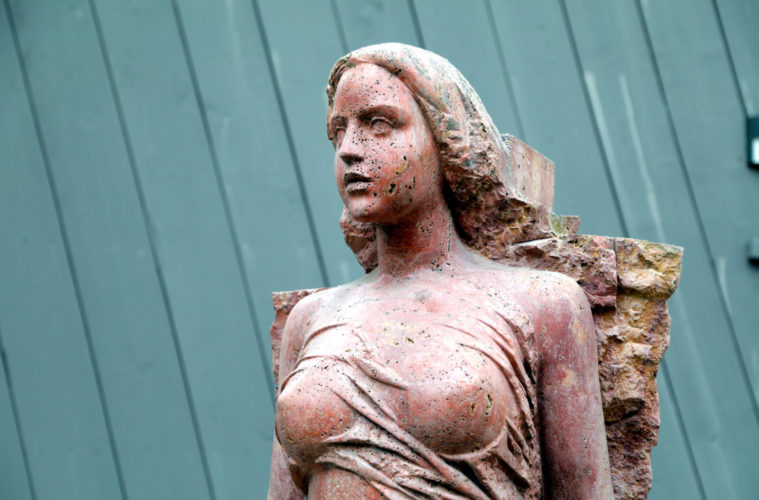In our SoCal art scene, where contemporary work proliferates, a classically trained sculptor has labored tirelessly for three decades, creating in his Irvine studio sculptural pieces that are inspired by ancient Greek and Renaissance art. Working with Carrara marble mined from the quarry that Michelangelo used centuries ago, Márton Váró designs figurative sculptures, along with abstract cubes, displayed in public and private spaces throughout our country and the world.
From his outdoor studio, overlooking UC Irvine’s campus, the septuagenarian fashions sculptural works evoking centuries of great artistry. For his finely detailed pieces, some with unusual juxtapositions — as combining raw blocks of marble with classical figures in one piece — he eschews appropriation. Or as English poet/art critic Edward Lucie-Smith wrote: “These echoes and cross-references make Váró a typically post-modern artist. Postmodernism has been defined as the propensity to recombine elements from existing artistic languages in new ways, rather than striving to invent languages which are completely new. What he lacks, fortunately, is the cynicism which informs so much Postmodernist art.”
A profound influence in his work is the 16th century polymath Michelangelo known for his paintings, architecture and especially for his sculptures. Váró’s pieces reflect the Italian master’s expertise in figuration. And like the Renaissance artist, he is enamored with the translucent, white Carrara Marble — also known as “Statuario” marble — that he collects from Italy’s Tuscany region.
Váró believes as Michelangelo did that his completed sculptures are already contained within the raw marble blocks, and that he simply takes away the excess stone to reveal the flawless artworks that were always there. “I see the sculpture in the stone,” he told me. One example is “Breaking Free” (1991) of an elegant young draped woman, emerging from the stone that contained her. It is installed in the UC Irvine Arboretum right near his studio. As Lucie-Smith wrote, “A major part of Váró’s sculptural output consists of draped female torsos and female figures. These are obviously inspired by Greek sculptures of similar subjects, but they are never merely imitative.”
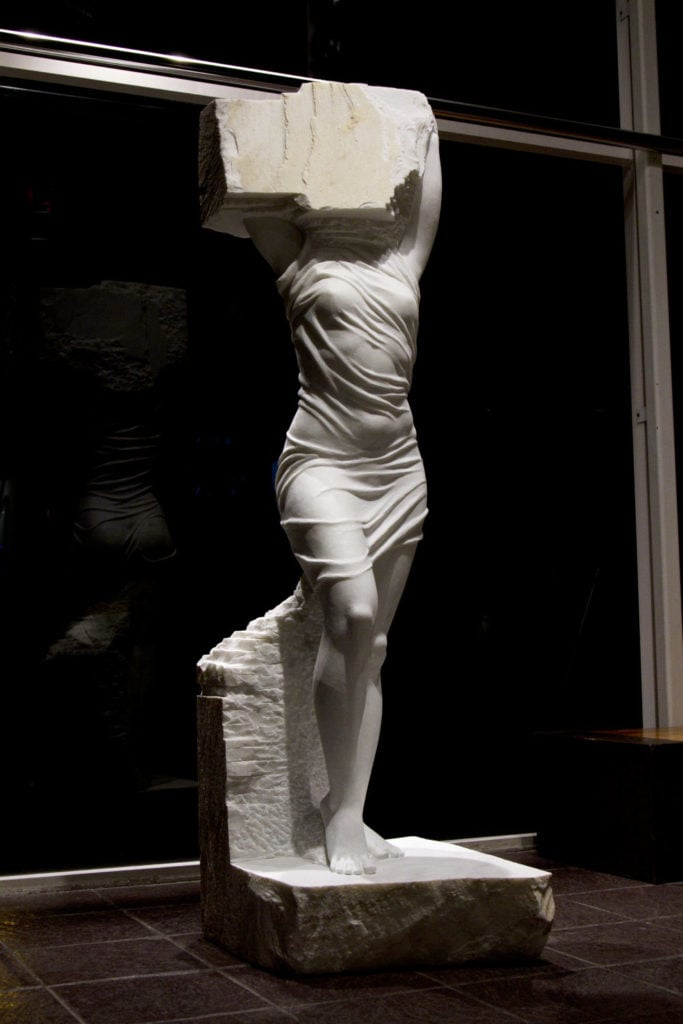
Márton Váró, Emerging (2016), artist’s studio. Carrara marble, 7x2x1.5 feet
Along with his classical pieces, Váró sculpts contemporary abstract cubes. Stephen Barker, Ph.D., Dean, UCI Claire Trevor School of the Arts explained: “Márton Váró’s cubes reveal the suppleness of marble, making them seem to float in space. They are like isolated quotations of classical drapery, digitized into block form.” Varo added, “In creating figures, I found reducing torso size fragments to cubes opened a unique way for me to build compositions that were both abstract and realistic.”
Barker also said: “Váró is a master sculptor whose subtle treatment of Carrara marble is incredibly powerful. He is one of those rare artists in complete command of his materials and technique.”
Indeed, the materials that artists use often reflect their integrity and devotion to their work. And Váró’s penchant to hand-select Carrara marble from quarries in Italy — a time-consuming and physically challenging process — is grounded in his understanding of and appreciation for his materials. (Carrara marble is rock formed by metamorphosis from small calcium carbonate crystals, approximately 190 million years ago.) In our discussions, Váró also indicated that marble is like a living entity that he communes with. And when asked about what happens if he carves off too much stone, he replied that he never makes that kind of mistake while sculpting.
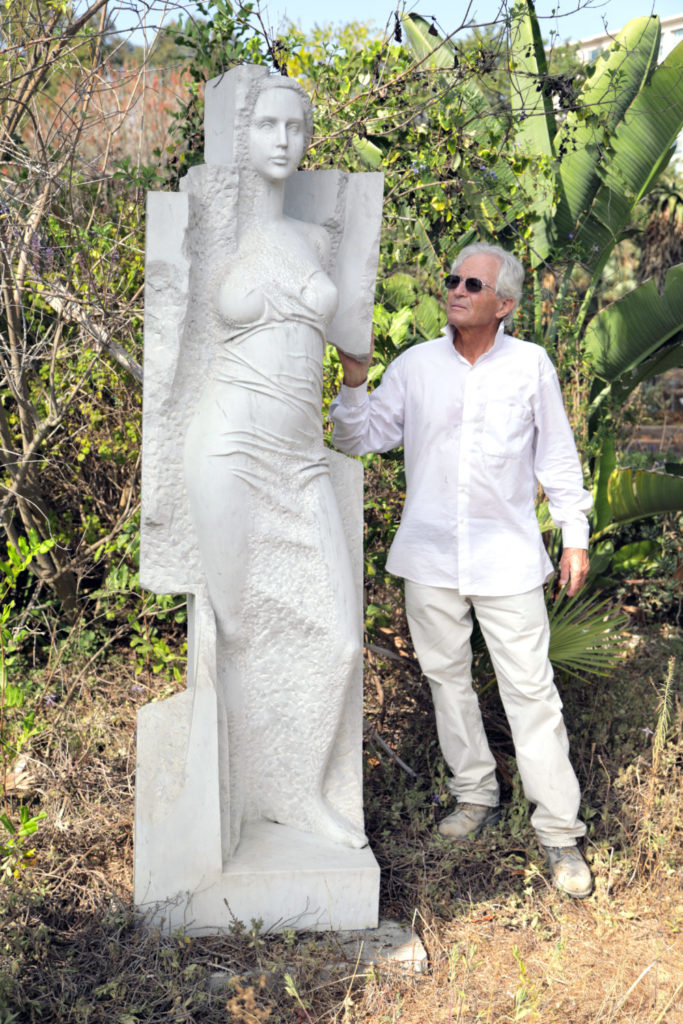
Márton Váró, Breaking Free II (1991). UCI Arboretum. Carrara marble, 7×2 x1.6 feet
Váró grew up in Transylvania in what was Hungary and is now Romania. He learned to sculpt from master wood carvers and later applied this skill to sculpting in stone. He studied the work of 20th century figurative sculptors, especially Constantin Brancusi, Henry Moore and Isamu Noguchi. Moore was a particularly important influence, as he carved his sculptural pieces directly from the material as Váró does.
His move to UC Irvine in 1988 coincided with his receipt of a Fulbright scholarship. At UCI, he developed a lasting friendship with Stephen Barker and studied the relationship between architecture and sculpture. He has also been Artist in Residence for a public art project in the City of Brea.
One of Váró’s favored sculptures is the seven-foot-tall “Emerging” (2016). This classical work, depicting a draped woman with her head hidden behind a large block of raw marble, elicited awe and delight when displayed in Laguna Art Museum in 2016. His marble sculpture, “Maestro Carl St. Clair” (2019), of Carl St. Claire, elevates the Pacific Symphony conductor to the eminent status he embodies. The life-size statue is installed in Costa Mesa’s Pacific Symphony Headquarters.
Other classically inspired pieces on view in SoCal are “Vestal” (1995) at the Tustin Ranch Marketplace, and “Ladies of the Nile” (1990) at the Embassy Suites in Brea. His “Standing Figure” (1994) depicting a fearless contemporary woman, in red Persian travertine stone, is installed at the Laguna College of Art and Design.
Váró’s “Palm Desert Peace Memorial” (1992) in Palm Desert, designed with architect Ross Andrews, includes four white marble sculptures of flames, resembling draped female figures, representing peace; and four rigid pillars, clad with granite, representing the threat of war.
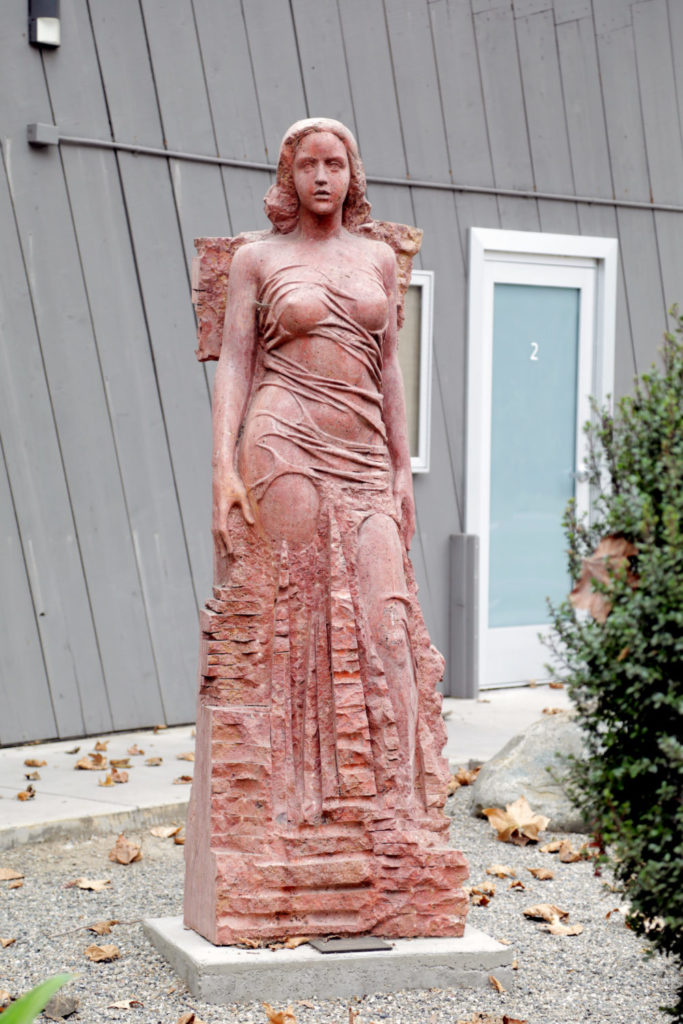
Márton Váró, Standing Figure (1994). Laguna College of Art & Design, Laguna Beach. Red Persian travertine, 7x2x2 feet
Váró’s latest project is volunteering for a fundraiser to benefit the Visual Snow Initiative. Specifically, he will create a life-size sculpture from Carrara marble for the winner of an auction organized by VSI to fund research for a rare neurological disorder. That sculpture will depict the winner’s person of choice — a loved one, an ancestor or him/herself. On December 1, the link, VSIAuction.com, will direct interested parties to the Initiative’s auction page.
The auction winner and a companion will also accompany Váró to the Tuscany marble quarry to hand-select the stone for the sculpture. When he returns home, he will labor for several months in his outdoor Irvine studio, carefully removing the excess stone to uncover the marble’s unique aspects of the “person of choice.”
Márton Váró’s diverse sculptural works, installed all over the world, are monuments to humankind’s artistic evolution. As he is full of energy and has no plans to stop working, history may well grant him the significant acclaim he deserves.
All photos supplied by Marton Varo, Jr./Brandefy.
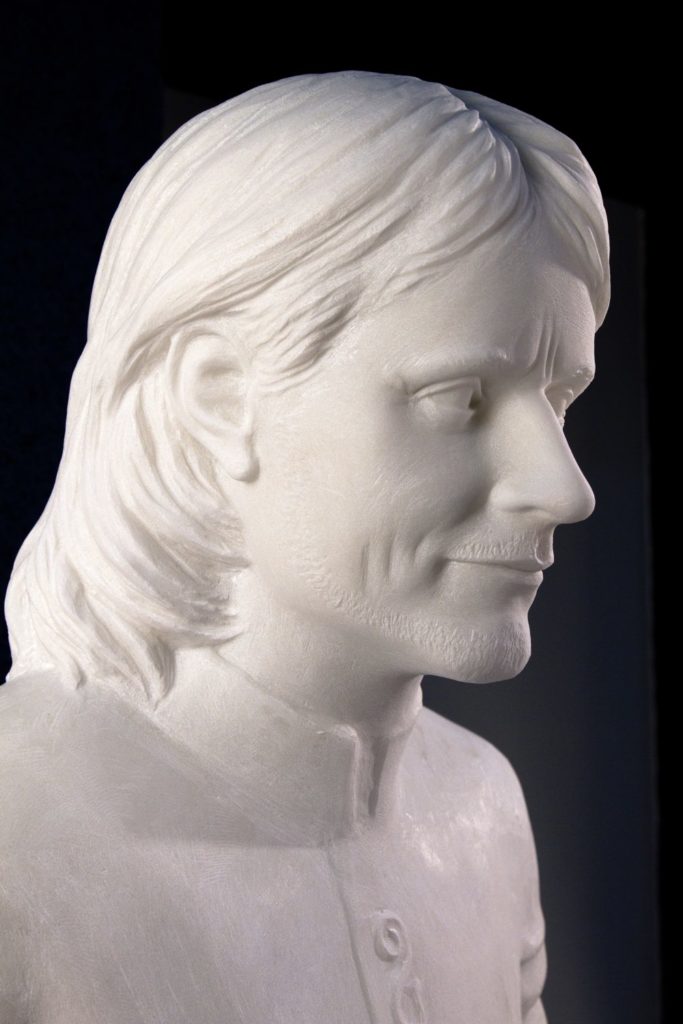
Márton Váró, Maestro Carl St. Clair (2019). Costa Mesa, Pacific Symphony Headquarters
Carrara marble, 7x2x2 feet (detail)
Advertising disclosure: We may receive compensation for some of the links in our stories. Thank you for supporting LA Weekly and our advertisers.

